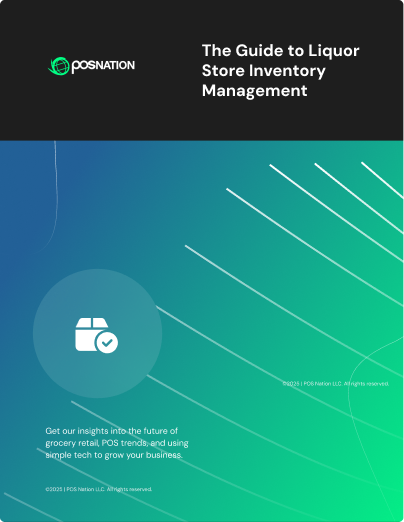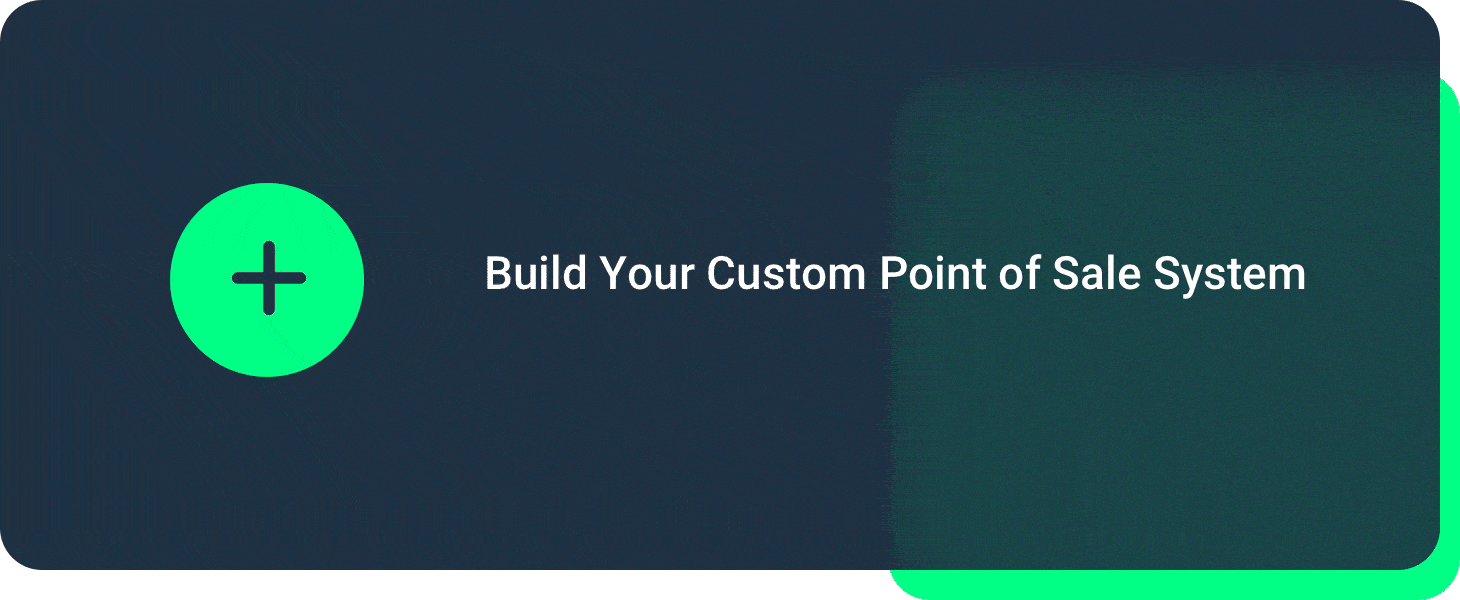Are you tired of wasting money on retail marketing campaigns that don't convert? You're not alone. Generic "one-size-fits-all" marketing approaches waste money and miss opportunities.
Instead, you need to use personalized marketing campaigns that target each customer with exactly the information and pitch they need, exactly when they need to hear it. But you don’t have 80 hours a week to spend manually marketing to each of your regular employees.
The solution? Proper retail customer segmentation.
Customer segmentation turns the sales data you're already collecting through your point of sale (POS) system into actionable insights that drive real results. By grouping customers based on their behaviors, preferences, and spending patterns, you can create targeted marketing campaigns, optimize your inventory, and deliver the personalized experiences that keep customers coming back.
In this post, we’ll take a closer look at what retail customer segmentation is, then review some best practices you can use to get the most from your segmentation and marketing efforts.
What Is Retail Customer Segmentation?
Let’s start with the basics: What is retail customer segmentation, and why does it matter?
Customer segmentation is the practice of dividing your customer base into distinct groups based on shared behaviors, characteristics, and shopping patterns. This approach to customer messaging is important because not all your customers are the same.
Related Read: Content Marketing for Small Business: 4 Practical Strategies
Consider two customers who each spent $1,000 last year at your store. At first glance, they look identical. But dig deeper and you'll discover they're completely different.
Customer A shops at full price 60% of the time, purchases across multiple product categories, and uses both your in-store and online channels. This customer has higher margins and stronger loyalty to your brand.
Customer B primarily buys sale items, sticks to one or two categories, and only shops with you online. While they ultimately spent the same amount as Customer A, their profitability and lifetime value are much lower.
Understanding these differences helps you make smarter decisions about marketing campaigns, inventory planning, and customer service strategies. You can reward your most valuable customers while developing targeted approaches to move others into higher-value segments.
Here’s the best part: You don't need a massive budget or expensive software to get started. Modern POS systems make customer segmentation easy — your POS already collects the data you need. Now, it's just a matter of putting that information to work for your business.
Let’s start by examining three critical segmentation categories.
Behavioral Segmentation
Behavioral segmentation looks at what your customers actually do when they shop with you. You’ll focus on purchase frequency, spending patterns, and product preferences.
Using behavioral segmentation can help you identify VIP customers who visit weekly and spend freely versus occasional shoppers who only come in during sales. Or discover that some customers consistently buy across multiple categories while others stick to their favorites.
Related Read: The Crucial Retail Industry Performance Metrics To Track in 2025
Demographic Segmentation
Next, you can segment based on demographics. This data helps you understand your customers beyond their shopping habits. Age, income level, and location all influence buying decisions, and your POS customer profiles make this information easy to track and analyze.
This type of segmentation is important because different age groups shop differently. Millennials might prefer contactless payments and online ordering, while Gen X customers value in-person service and product expertise. Income levels determine whether customers gravitate toward premium products or budget-friendly options.
Geographic factors matter, too. Urban shoppers often prioritize convenience and are willing to pay for it, while suburban families typically focus on value and bulk purchases for household needs.
Psychographic Segmentation
Finally, you can segment customers based on psychographics. This data goes deeper than demographics to incorporate your customers' values, lifestyle choices, and motivations. While it's more complex to identify, combining psychographic insights with your POS purchase data creates powerful segmentation opportunities.
You might discover eco-conscious customers who prioritize sustainable products over price, or identify convenience-driven shoppers who value speed and efficiency above everything else. Some customers are problem-solvers researching specific needs, while others are impulse buyers responding to displays and promotions.
Using Your POS System for Segmentation
With these basic categories in mind, let’s dive into the nitty-gritty of how you can use your point of sale tools to set yourself up for success with retail customer segmentation.
Data Collection
The great news is that your POS system is already doing the heavy lifting when it comes to customer data collection. If you’re using a modern point of sale system, every transaction automatically builds customer profiles for each purchaser without any extra work from you or your staff.
As customers make purchases, your system tracks their buying patterns — what they buy, when they shop, how much they spend, and which payment methods they prefer. Over time, these data points will start to reveal patterns about product categories, brand preferences, and price points that matter most to each customer.
Take a convenience store as an example: Your POS data might show that certain customers consistently buy coffee and breakfast items from 7- a.m. to 9 a.m. on weekdays, while another group gravitates toward energy drinks and snacks during late-night hours. Understanding these specifics helps you send more targeted messaging to each customer group, instead of blasting out promotions featuring early-morning coffee sales to everyone.
Analytics
Next, you need to go beyond simply collecting data and start analyzing the information at your fingertips. Modern point of sale systems provide automated reporting that shows you exactly how different customer segments are performing.
A best practice is to set up weekly and monthly reports that break down segment behaviors, showing which groups are most profitable and which promotions resonated with different customers. This data helps you see where your marketing efforts are producing fruit and where they’re wilting.
You can also use retail analytics for better inventory management. When you understand segment preferences, you can stock products based on actual customer demand rather than gut instinct. High-value customers prefer premium brands? Make sure you're never out of stock. Price-sensitive shoppers drive volume during sales? Plan your promotions accordingly.
Retail Customer Segmentation: Practical Applications
Now, let’s examine how retail customer segmentation looks in the real world by exploring three practical applications.
Grocery Stores
Grocery stores often have three main customer types:
- Health-conscious shoppers: These customers gravitate toward organic produce, gluten-free options, and supplements. They're willing to pay premium prices for quality.
- Family shoppers: These buyers focus on bulk purchases, kid-friendly products, and efficient weekly shopping trips to feed everyone.
- Convenience seekers: These customers need premade meals, grab-and-go items, and quick solutions for busy schedules.
Your POS system tracks which categories each customer prefers, letting you send targeted organic meal recipe emails to health enthusiasts, while sending different family meal ideas to bulk buyers.
Liquor Stores
Let’s consider a liquor store with three categories — shoppers who prefer wine and craft beers, those looking for top-shelf spirits on special occasions, and “party hosts” who buy mid-tier spirits and bulk beer:
- Wine shoppers: These are high-end regular buyers looking for comfortable staples and new seasonal options.
- Top-shelf buyers: These shoppers are sporadic, usually coming to get bottles for gifts or hosting holiday functions.
- Party hosts: These buyers skew younger and are likely to regularly purchase bulk items. They’re more price-conscious than the other categories.
Your POS captures all their purchase patterns, so you know to send the party hosts an email blast about your upcoming Fourth of July weekend sale on 30-packs of Busch Light, but skip sending that particular promotion to your wine and craft beer buyers.
Tobacco Shops
Smoke shop owners will tell you they can easily split their customer base into categories based on behavior and purchase patterns. Consider:
- Premium customers: These are the customers who are into high-end cigars, humidors, and other high-ticket items. They may not shop as frequently as the other categories, but when they do, it’s for high-margin items.
- Regular smokers: These shoppers typically buy cartons, have strong brand loyalty to their cigarettes, but have low brand loyalty to the smoke shop.
- Vape enthusiasts: These customers are the most adventurous of smoke shop customers. They’ll upgrade devices regularly, follow trends, and experiment with new flavors regularly.
Any smoke shop owner understands that advertising cigarettes to vapers (and vice versa) is a complete nonstarter. Retail customer segmentation helps tobacco store operators spend their advertising and promotional dollars wisely by segmenting out the vapers and premium customers on that message about a promotion on Marlboro cartons.
(The really smart smoke shop owners will filter out the Newport smokers.)
How To Get Started With Retail Customer Segmentation
So, how do you actually do this? Follow these easy steps.
Step 1: Start With Your Existing Data
The first step in launching a retail customer segmentation campaign is to look to your POS system. Review the customer information you've been collecting through daily transactions.
Focus on the basics first: how often customers shop and how much they typically spend. These two simple metrics will reveal patterns. Take a close look at your top 20% of customers by total value — they're likely your most profitable segment and are a great place to start.
Step 2: Create 4–6 Basic Segments
Next, don’t overwhelm yourself by starting things off with 15 highly-specific segments. Instead, keep it simple with four main customer groups that most retailers recognize:
- VIP customers shop frequently and spend generously.
- Regular customers visit often but spend moderately.
- Occasional shoppers come in less frequently with varying purchase amounts.
- New customers have made recent first purchases.
Starting with these segments gives you a solid foundation to build on as you gather and analyze more customer data.
Step 3: Set Up Automated Tracking
Configure your POS system to automatically classify customers into segments based on their purchase behavior, demographics, and any psychographics you elect to track. Automation eliminates manual work and helps keep your segments consistent.
Train your staff to update customer profiles when they notice preferences or gather additional information during checkout conversations. You also want to spend at least 15 minutes every week checking in on your lists to see which segments are growing and which might need a little attention.
Related Read: What Is Retail Automation? (+5 Benefits for Small Retailers)
Step 4: Launch Targeted Campaigns
Once you have your ducks in a row, you’re ready to launch your first targeted campaign! We recommend starting with email marketing since it's cost-effective and easy to measure.
Send VIP customers early access to sales while offering new customers a welcome discount. Don’t just look at purchase behavior alone to guide your choices. Instead, craft promotions that speak to each segment's motivations. When you speak to emotion, you’re far more likely to earn the click and get the customer to open your email.
Track response rates for each campaign and adjust your messaging based on what resonates. Remember: All your marketing efforts should be about building relationships, not just pushing products.
Getting the Most From Your Retail Customer Segmentation
Customer segmentation is an essential strategy for any modern retailer who wants to stay afloat. The difference between struggling retailers and thriving ones often comes down to understanding who their customers are and what they actually want.
You don't need to overcomplicate this process. Start simple by using the behavioral data your POS system already captures. Focus on purchase frequency and spending patterns to identify your most valuable customers, then build targeted strategies around serving them better.
If you want to truly leverage customer segmentation, you need a POS solution that goes beyond basic transaction processing. You need robust reporting capabilities, automated customer tracking, and seamless integration with your marketing efforts.
That's where we come in. POS Nation specializes in helping small and medium-sized retailers access the same powerful tools that big chains use to understand and serve their customers. Our systems are designed to make customer segmentation simple, accessible, and profitable for businesses just like yours.
Ready to turn your customer data into your competitive advantage? Build and price your ideal POS solution with POS Nation today.








 by Cort Ouzts
by Cort Ouzts


 by Spence Hoffman
by Spence Hoffman